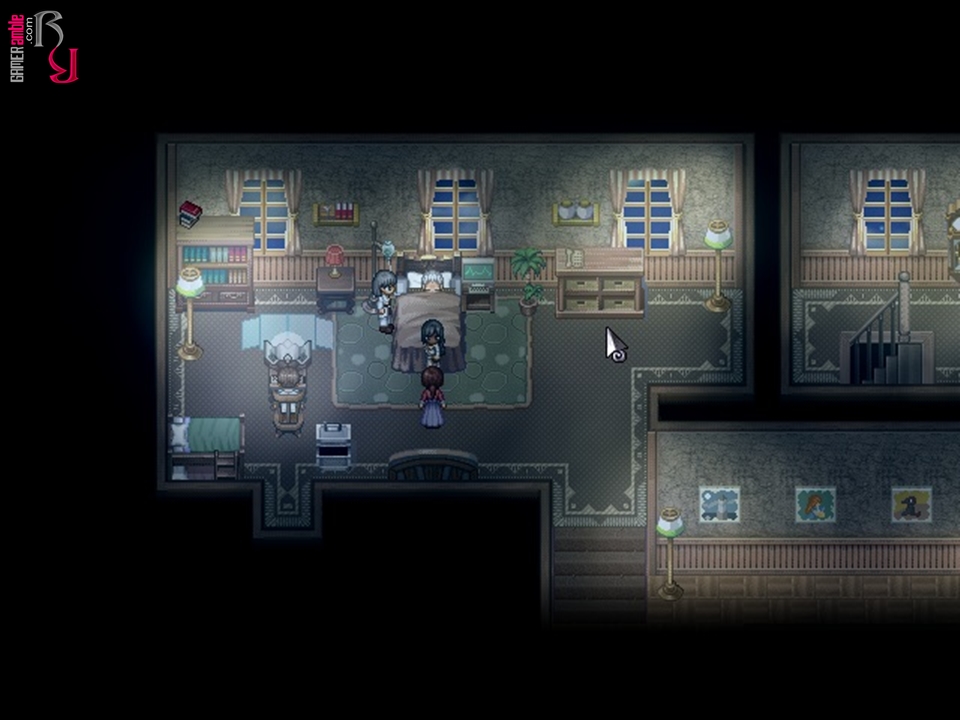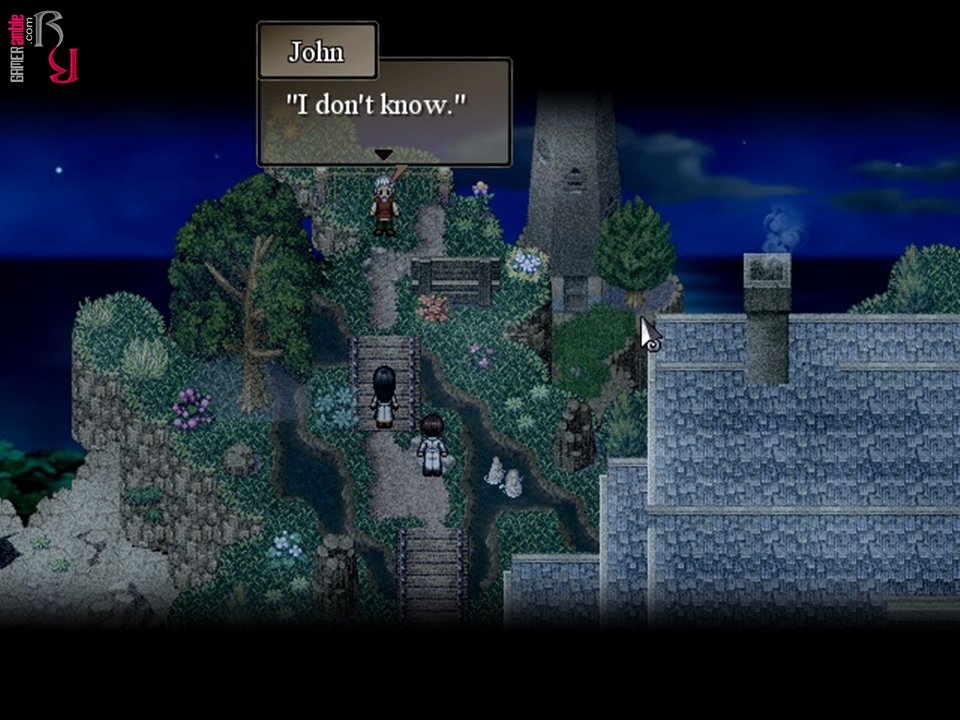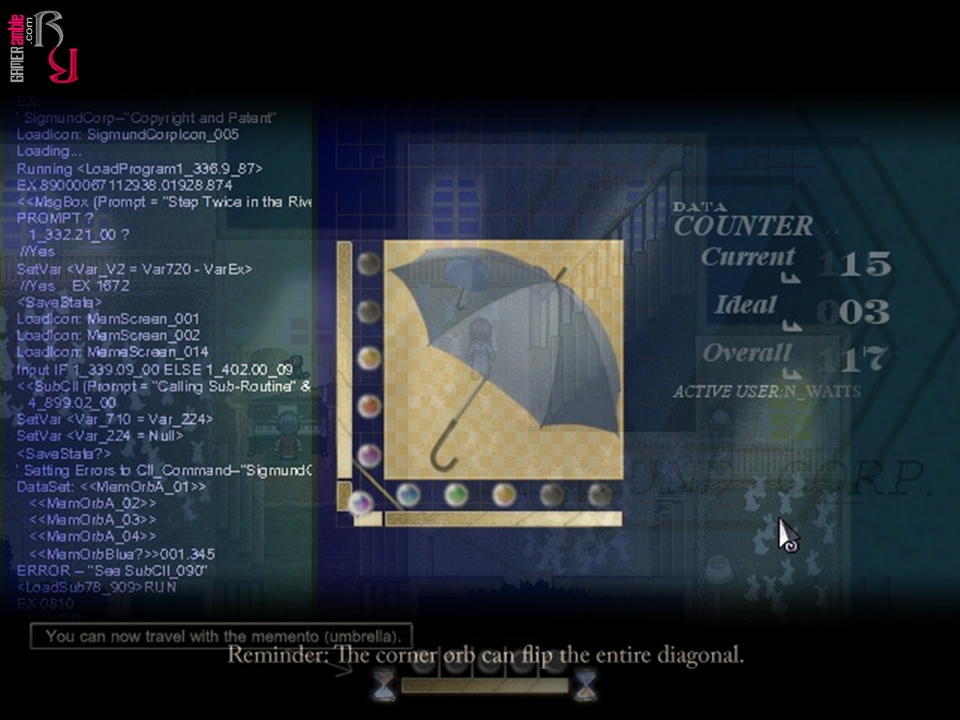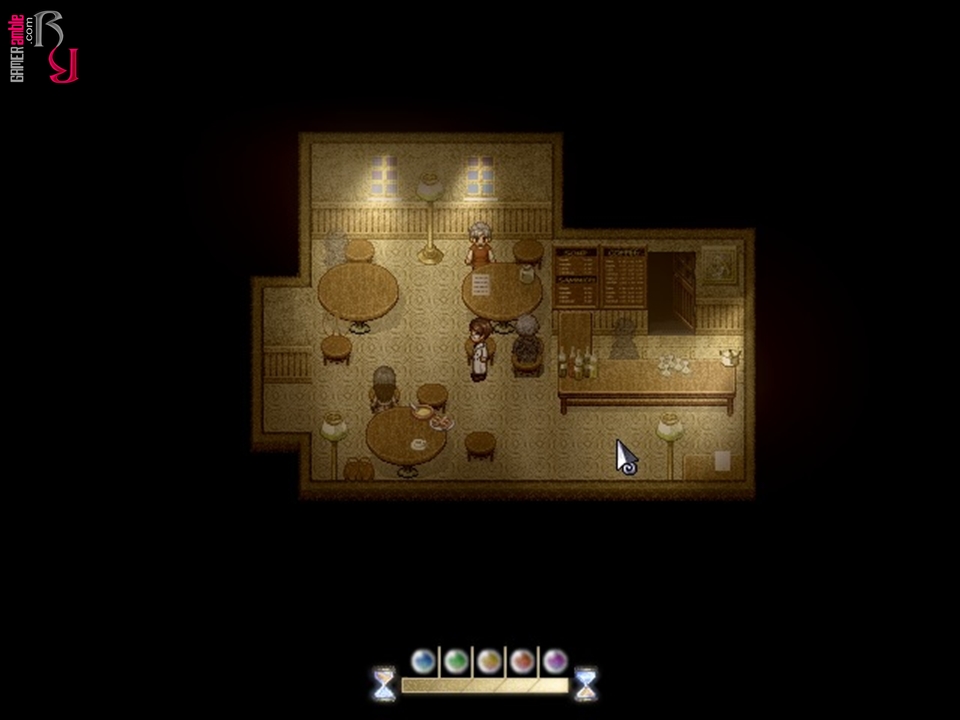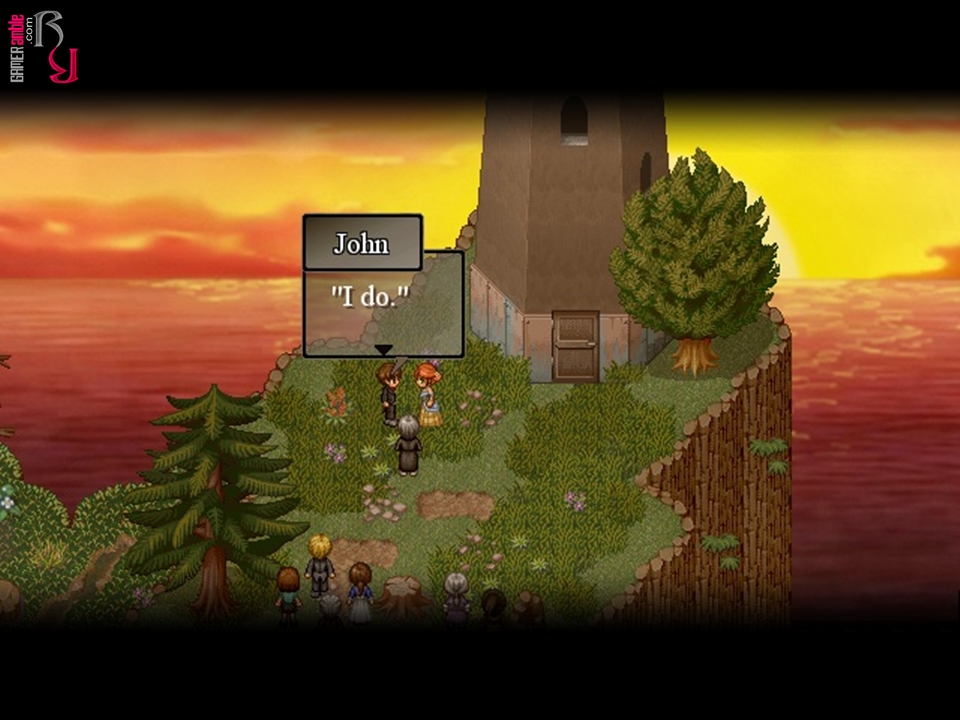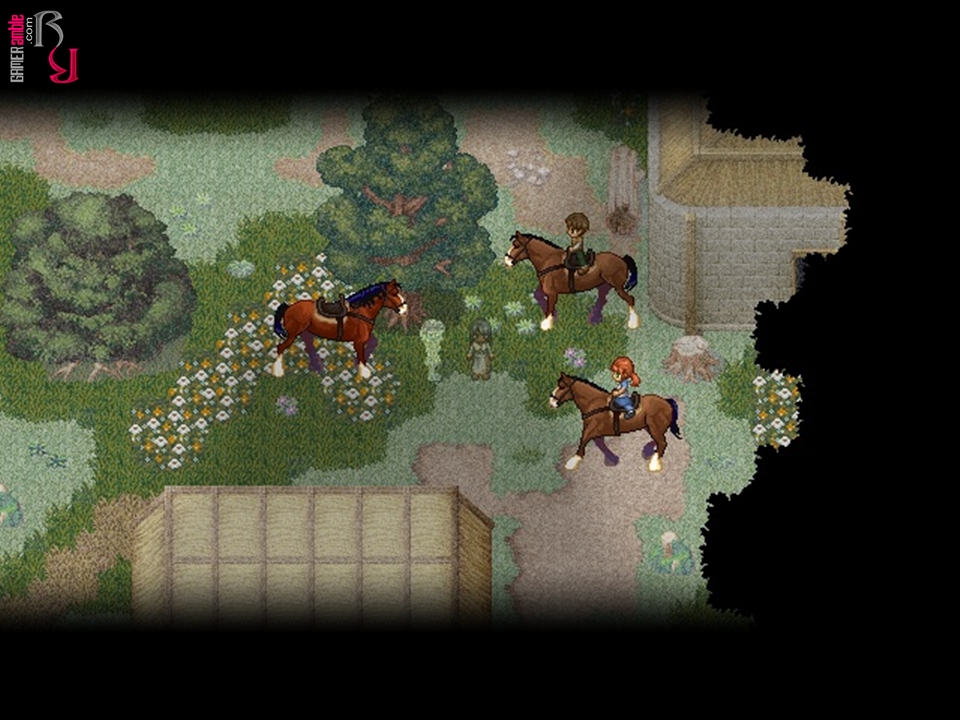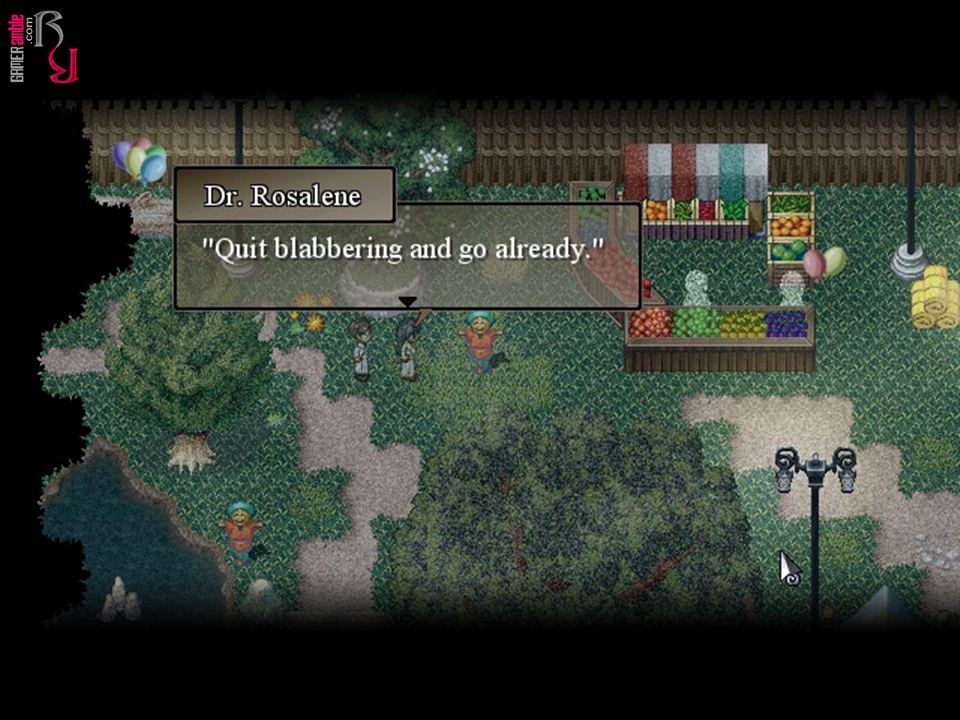To the Moon
Developer: Freebird Games | Publisher: Freebird Games | Release Date: 2011 | Genre: Adventure / RPG / Indie | Website: Official Website | Purchase: Steam
In the future, scientists can implant false memories in people’s minds. This procedure is prevalent among patients who are on their deathbeds. Since it allows them to attain something in their lives that they might not have been able to do themselves, they can die without having any regrets. Eva and Neil are two scientists working for the Sigmund Agency of Life Generation, and their latest client is a man named Johnny whose dying wish is to go to the moon. While unusual, it is not impossible to grant, but Eva and Neil discover that there is much more to the request than meets the eye.
To The Moon is the first commercial project by Indie developer Freebird Games, who have already built up a solid reputation for narrative-driven projects like “The Mirror Lied” and “Quintessence.” We had heard many good things about their latest offering, and since the emphasis was once again on the story, we decided to try it out before someone could spoil it for us. We are glad we did because this poignant tale might be brief, but it definitely left a lasting impression on us.
At first glance, the game does not look like much unless you are a retro fan. It was created with the “RGP Maker XP” software, so it bears more than a passing resemblance to 16-bit SNES classics like “Chrono Trigger.” You have the isometric view and speech bubbles but don’t worry, as there are no level grinding or battles (bar one small section) to worry about. The focus is firmly on the story, with everything else being secondary. This means that the gameplay is bare bones, but with such a fascinating plot, it hardly matters. The gameplay lies somewhere between a point-and-click adventure and a visual novel, so while it can be completed in roughly four hours, it also means that there is almost no unnecessary padding. Since the gameplay is so linear and no real puzzles impede your progress, it is possible to complete the game in one sitting. One thing is sure: we experienced many more emotions in those four hours than in many games ten times longer.
What makes the story so great is the believable characters and witty dialogue. Eva and Neil are almost polar opposites of each other but work well as a team. Most of the laugh-out-loud moments are provided by Neil, and you can expect to see quite a few pop culture references. There is no voice acting, but that is fine with us, as it would have taken exceptionally good actors to deliver the kind of performance needed to do the dialogue justice. Guiding the two lead characters through Johnny’s memories is a gripping experience story-wise, but the gameplay consists of little more than walking around and finding memory links.
Since most scenes are triggered by simply walking into the right area and all interactive objects are clearly marked, the game practically plays itself. Thrill-seekers definitely need not apply. Some simple tile-flipping puzzles need to be done before traveling between memories, but these can be completed in a matter of seconds and won’t impede anyone’s progress. You will also uncover some notes describing people or objects, but these are just there to flesh out the story. There are only a few locations to explore, but since they are all crucial moments in Johnny’s life, they are all very memorable. It is brilliant how all the story strands are masterfully woven together, which is quite a mean feat, considering you are chronologically going through the story backward. There are so many heartwarming scenes that only those with hearts of stone will be untouched by the unfolding events.
The game has an excellent piano-driven soundtrack to help stir the emotions even further. We are suckers for the piano, so our opinion might be a bit biased, but we genuinely believe that the soundtrack is outstanding. The main tune, played several times during the game, still gives us goosebumps every time we hear it. There is even a beautiful ballad thanks to the stellar contribution from Laura Shigihara of Plants Vs Zombies (amongst others) fame. The sound effects are also good, but the music is definitely the star of the show. The game can be played with either keyboard or mouse, but it feels somewhat cumbersome. Characters can only move in four directions and are easily blocked by simple objects like flowers. This is a limitation of the tile-based engine and should not detract too much from the experience.
It has been a while since we have played a game as gripping as this one. Since the story is the highlight, we cannot say much about it apart from urging everyone to play it with as little foreknowledge as possible. The emotional impact just will not be as great if you already know what to expect. It is a pity that the visuals will scare away some people, as the game deserves to be played by everyone. While it might not be the greatest “game” you can play, we think very few other titles out there can match it in terms of story. If future episodes can only achieve half of the emotion captured by this one, we will already be happy, but it will be a very tough act to follow.
System Requirements
- Minimum PC System Requirements
- Minimum Mac OS X System Requirements
- Minimum SteamOS + Linux System Requirements
-
- OS:Windows 98, XP, Vista, 7, 8
- Processor:Intel Pentium III 800 MHz
- Memory:512 MB RAM
- Graphics:1024×768 High Color +
- DirectX®:9.0
- Hard Drive:100 MB HD space
-
- OS: OS X 10.6.8
- Graphics: OpenGL 2.0 capable graphics card
- Hard Drive: 500 MB available space
-
- OS: Major Linux Distribution from 2010
- Graphics: OpenGL 2.0 capable graphics card
- Hard Drive: 500 MB available space


